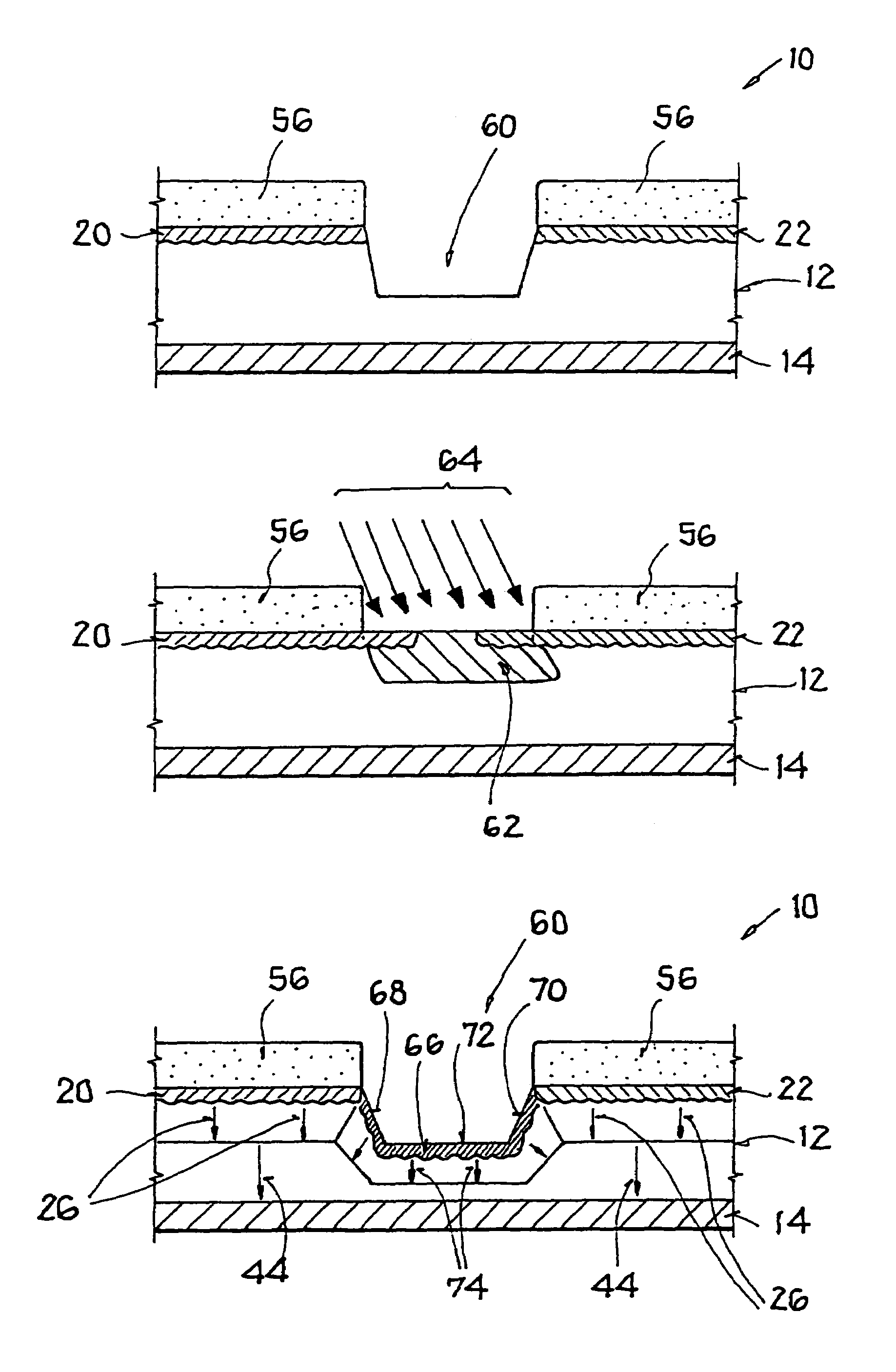Method of fabricating semiconductor components through implantation and diffusion in a semiconductor substrate
a technology of semiconductor components and substrates, applied in semiconductor devices, electrical equipment, transistors, etc., can solve the problems of reducing generating defects along the edge or boundary of the isolation trench, etc., to reduce the breakdown voltage of the device, prevent overflowing critical leakage current rates, and high thermal loading
- Summary
- Abstract
- Description
- Claims
- Application Information
AI Technical Summary
Benefits of technology
Problems solved by technology
Method used
Image
Examples
Embodiment Construction
[0034]FIG. 1 schematically shows a cross-section of a portion of a semiconductor body 10 comprising a semiconductor substrate 12 on an insulating intermediate layer or isolating layer 14. A typical example of such a semiconductor body 10 is represented by a “Silicon On Insulator” (SOI) wafer. In this regard, the insulating intermediate layer 14 is typically realized as a silicon dioxide layer.
[0035]As a first step in a device or component fabrication process, respective well regions with different conductivity type will be formed in the semiconductor body 10. Namely, for forming these well regions with respective different conductivity of the respective majority charge carriers, different partial regions of the semiconductor substrate 12 will respectively be doped with dopants of different valence, so that the different conductivity types result in the respective well regions. To achieve a P-type conductivity in a four-valent semiconductor substrate material such as silicon, for exa...
PUM
 Login to View More
Login to View More Abstract
Description
Claims
Application Information
 Login to View More
Login to View More - R&D
- Intellectual Property
- Life Sciences
- Materials
- Tech Scout
- Unparalleled Data Quality
- Higher Quality Content
- 60% Fewer Hallucinations
Browse by: Latest US Patents, China's latest patents, Technical Efficacy Thesaurus, Application Domain, Technology Topic, Popular Technical Reports.
© 2025 PatSnap. All rights reserved.Legal|Privacy policy|Modern Slavery Act Transparency Statement|Sitemap|About US| Contact US: help@patsnap.com



